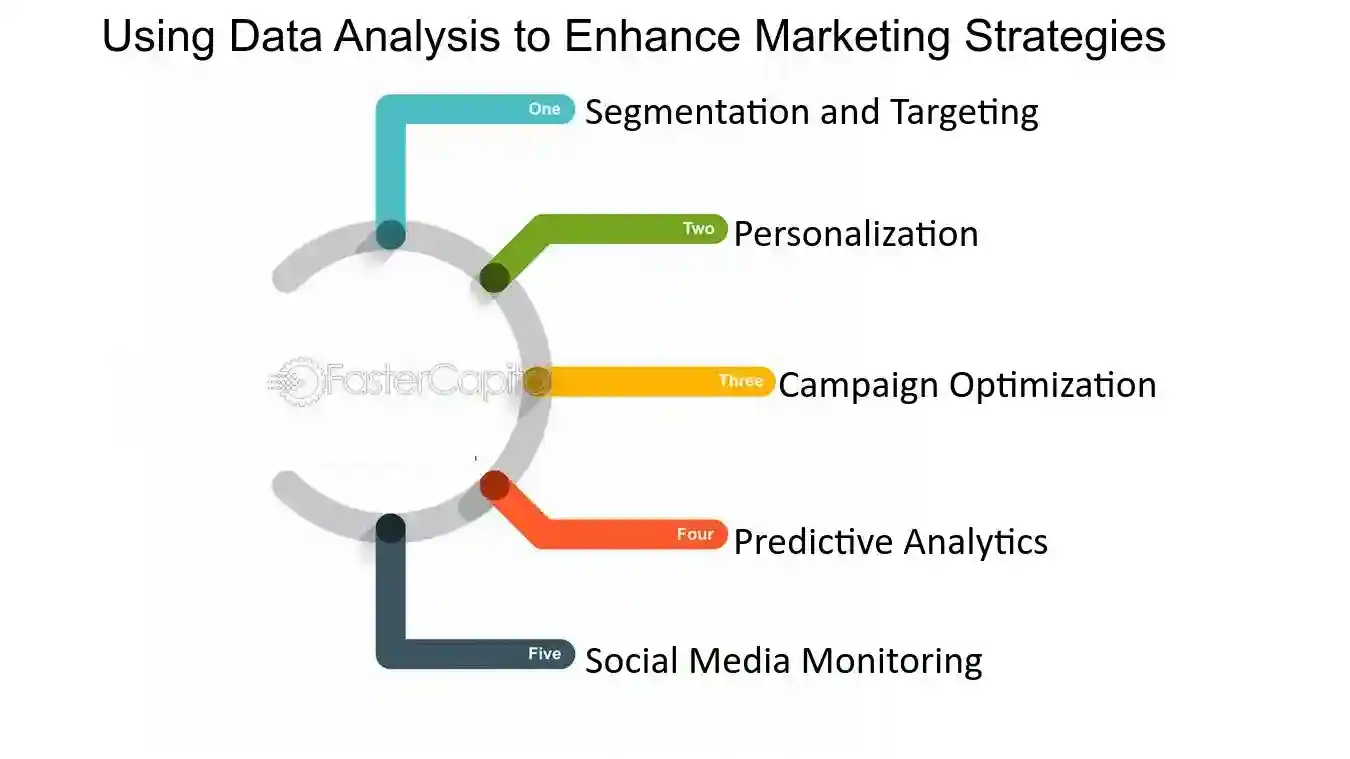The Role of Data in Market Analysis
Ellie Moore

Photo: The Role of Data in Market Analysis
In today's fast-paced and competitive business environment, market analysis has become an indispensable tool for organizations aiming to stay ahead of the curve. At the heart of effective market analysis lies a fundamental element: data. The role of data in market analysis extends far beyond simple statistics it serves as the cornerstone for making informed decisions, identifying trends, and devising strategies that drive success. This article explores the significance of data in market analysis, how it is used, and the transformative impact it has on businesses.
What Is Market Analysis and Why Does It Matter?
Market analysis is the process of assessing the dynamics of a specific market within an industry. This includes understanding customer behavior, competitors, trends, and market demand. Businesses leverage this analysis to make strategic decisions, such as launching new products, pricing strategies, and identifying potential growth opportunities.
Without accurate data, market analysis risks being a shot in the dark. Data provides the evidence businesses need to back their decisions, ensuring they align with real-world market conditions rather than assumptions. In a digital age where information is abundant, ignoring data-driven insights can result in lost opportunities and inefficiencies.
Types of Data Used in Market Analysis
Data for market analysis can be broadly categorized into two types: qualitative and quantitative. Both play critical roles in delivering a holistic view of the market.
1. Quantitative Data
Quantitative data focuses on measurable metrics, such as:
- Sales figures
- Website traffic
- Market share percentages
- Customer demographics (age, income, location)
This type of data provides a numerical backbone that helps quantify the size of a market, gauge the potential audience, and track performance trends over time.
2. Qualitative Data
Qualitative data offers deeper insights into customer attitudes, preferences, and motivations. Common sources include:
- Customer feedback
- Social media comments
- Surveys and focus groups
- Reviews and testimonials
While it may not be as easily measurable, qualitative data is essential for understanding the “why” behind consumer behavior.
3. Real-Time and Historical Data
- Real-Time Data: Real-time data allows businesses to make decisions based on current trends, such as monitoring competitor pricing changes or tracking live customer interactions.
- Historical Data: Historical data provides a context for analyzing market changes over time, enabling trend predictions and seasonality planning.
The Benefits of Data in Market Analysis
Data empowers organizations to gain a competitive edge in several ways. Here are the key benefits:
1. Accurate Decision-Making
Data eliminates guesswork, allowing businesses to make precise decisions. For example, analyzing sales data can reveal which products are performing well, helping companies focus on their most profitable offerings.
2. Trend Identification
By analyzing data patterns, businesses can identify emerging market trends early. For instance, data from social media analytics might indicate rising customer interest in sustainable products, guiding companies to adapt their offerings accordingly.
3. Customer Segmentation
Data enables segmentation by dividing a market into smaller groups based on shared characteristics. This allows for tailored marketing campaigns, ensuring messaging resonates with specific audiences.
4. Risk Mitigation
Access to comprehensive data helps businesses anticipate potential risks, such as market saturation or economic downturns. This foresight enables proactive measures to safeguard profitability.
Tools and Techniques for Data-Driven Market Analysis
The rapid advancement of technology has made it easier than ever to collect and analyze data. Here are some commonly used tools and techniques:
1. Big Data Analytics
Big data platforms process vast amounts of structured and unstructured data to uncover patterns and trends. Popular tools include Hadoop and Apache Spark.
2. Customer Relationship Management (CRM) Systems
CRM software like Salesforce helps organizations gather customer data, track interactions, and predict future behaviors based on historical trends.
3. Social Media Analytics
Platforms such as Google Analytics and Hootsuite allow businesses to monitor social media engagement, sentiment, and reach, providing invaluable insights into consumer opinions.
4. Artificial Intelligence (AI) and Machine Learning (ML)
AI and ML algorithms automate data analysis, offering predictive insights that enable faster and more accurate decision-making.
Challenges in Utilizing Data for Market Analysis
Despite its importance, leveraging data effectively comes with its challenges. These include:
1. Data Overload
With the exponential growth of data, businesses can struggle to identify which information is truly relevant to their goals. Overcoming this requires the use of smart filtering and prioritization tools.
2. Data Privacy Concerns
Consumers are increasingly wary of how their data is collected and used. Compliance with privacy laws, such as GDPR and CCPA, is essential to maintain trust and avoid legal repercussions.
3. Integration of Disparate Data Sources
Data often comes from multiple sources, such as online sales, in-store purchases, and social media. Ensuring these datasets work seamlessly together can be a significant hurdle.
4. Skill Gaps
Not every organization has the expertise to analyze complex datasets. Investing in employee training or hiring data professionals is often necessary.
Real-World Applications of Data in Market Analysis
To illustrate the transformative power of data, let’s explore some real-world applications:
1. E-Commerce Personalization
Online retailers like Amazon use customer data to recommend products tailored to individual preferences, significantly boosting sales.
2. Predictive Analytics in Retail
Supermarkets analyze purchasing patterns to predict demand, ensuring optimal stock levels and reducing waste.
3. Location-Based Insights
Restaurant chains use data to determine prime locations for new outlets, considering foot traffic, local demographics, and competitor presence.
The Future of Data-Driven Market Analysis
As technology continues to evolve, the role of data in market analysis will only grow. Innovations such as the Internet of Things (IoT) and blockchain are set to provide even richer datasets. Meanwhile, advancements in AI will make data analysis more accessible, enabling businesses of all sizes to harness its potential.
Conclusion
Data is not just an asset it is the lifeblood of market analysis. It provides businesses with the clarity needed to navigate an ever-changing market landscape. By leveraging data effectively, organizations can uncover insights that drive growth, foster innovation, and mitigate risks.
To stay competitive, businesses must prioritize data literacy and invest in tools and technologies that enable smarter decision-making. In doing so, they ensure their strategies are not only informed by the past but also poised to capitalize on future opportunities.
For those ready to embrace the full potential of data in market analysis, the future holds limitless possibilities. Start integrating data-driven approaches today to secure a thriving tomorrow.
Finance & Investment
View All
January 31, 2025
M1 Finance Smart Investing AppElevate your online presence with expert SEO content. Drive traffic, improve rankings, build trust, and convert visitors into customers.
Ellie Moore

January 21, 2025
Neighborhood Finance Corporation HelpMaster expert SEO content to boost rankings & authority. Learn to create valuable, E-E-A-T-driven content that builds trust and dominates search.
Ellie Moore

March 16, 2025
Finance Manager Success TipsCraft expert SEO content for higher rankings & engaged readers. Discover how to create valuable, authoritative content that satisfies E-E-A-T & builds trust.
Ellie Moore

June 15, 2025
MA Finance Online Degree Complete GuideYour blueprint for dominating search in 2025: Master expert SEO content to build authority, drive traffic, and meet E-E-A-T standards.
Ellie Moore

February 12, 2025
Managing Finances Like a ProUnlock higher rankings and engaged audiences with expert SEO content. This guide reveals how to craft valuable, authoritative content that satisfies users & alg...
Ellie Moore

August 14, 2025
Mazda Financing Deals You’ll LoveUnlocking Top Rankings: Your Guide to Expert SEO Content In today's crowded digital landscape, simply having content isn't enough. To truly stand out, attract y...
Ellie Moore
Insurance
View AllNavigate healthcare's future. Discover essential health insurance companies for robust, affordable coverage, ensuring peace of mind for policyholders & pros.
Ellie Moore
Unlock optimal protection & value with Allstate insurance. This guide helps policyholders & risk managers confidently secure their future.
Ellie Moore
Explore aviation insurance options, from aircraft liability to passenger protection. Secure the skies for your operations!
Ellie Moore
Learn how critical illness insurance offers financial protection during health crises. Get covered and stay secure!
Ellie Moore
Find optimal premium car insurance quotes online. This guide helps policyholders, agents & risk managers compare rates for robust, high-value coverage.
Ellie Moore
Learn how high-net-worth individuals get specialized insurance tailored to unique assets and risks. Discover luxury coverage!
Ellie Moore
Education
View AllSudbury schools embrace radical self-direction in learning. Learn how they empower students to take full control of their education journey.
Read MoreMicro-credentials are on the rise! Discover how they provide fast, focused skills for today’s learners and reshape education.
Read MoreStrong school-community partnerships can drive student success. Discover the benefits and strategies for effective collaboration.
Read MoreDiscover how flipped classrooms work and why they’re becoming popular. Learn the key benefits of this innovative teaching approach.
Read MoreProviding education in conflict zones is a major challenge. Learn about the barriers and efforts to ensure learning continuity in crisis situations.
Read MoreSocial skills training is key for kids with autism. Learn practical strategies to improve social interaction and communication in children with ASD.
Read MorePopular Post 🔥
View All
1
2
3
4
5
6
7
8
9
10
Health






Automotive
View All
July 29, 2025
AA Automotive Care Tips For Every Vehicle Owner
Keep your car running smoothly for years! This guide offers essential AA automotive care tips for every owner, ensuring safety, efficiency, and a long-lasting r...

August 22, 2025
Davis Automotive Quality You Can Count On
Davis Automotive defines quality in auto repair. Experience expert service, honest assessments, and lasting peace of mind for your vehicle. Your trusted choice.

August 2, 2025
Automotive Painter Jobs And How To Get Hired
Drive your career forward! Learn how to get hired as an automotive painter, mastering the art of vehicle refinishing for a rewarding profession.

August 12, 2025
STS Automotive Denver Services You Can Trust
Searching for trusted used cars in Denver? STS Automotive specializes in affordable vehicles, including salvage titles, ensuring value & peace of mind.

September 13, 2025
What Lincoln Automotive Financial Can Offer
Embark on luxury vehicle ownership. Experience refined elegance & innovative spirit for an exciting journey ahead.

September 12, 2025
Joe Bullard Automotive Premier Car Solutions
Joe Bullard Automotive: Your trusted partner for premier car solutions. Experience unparalleled service, expertise, and a customer-first approach since 1955.

















